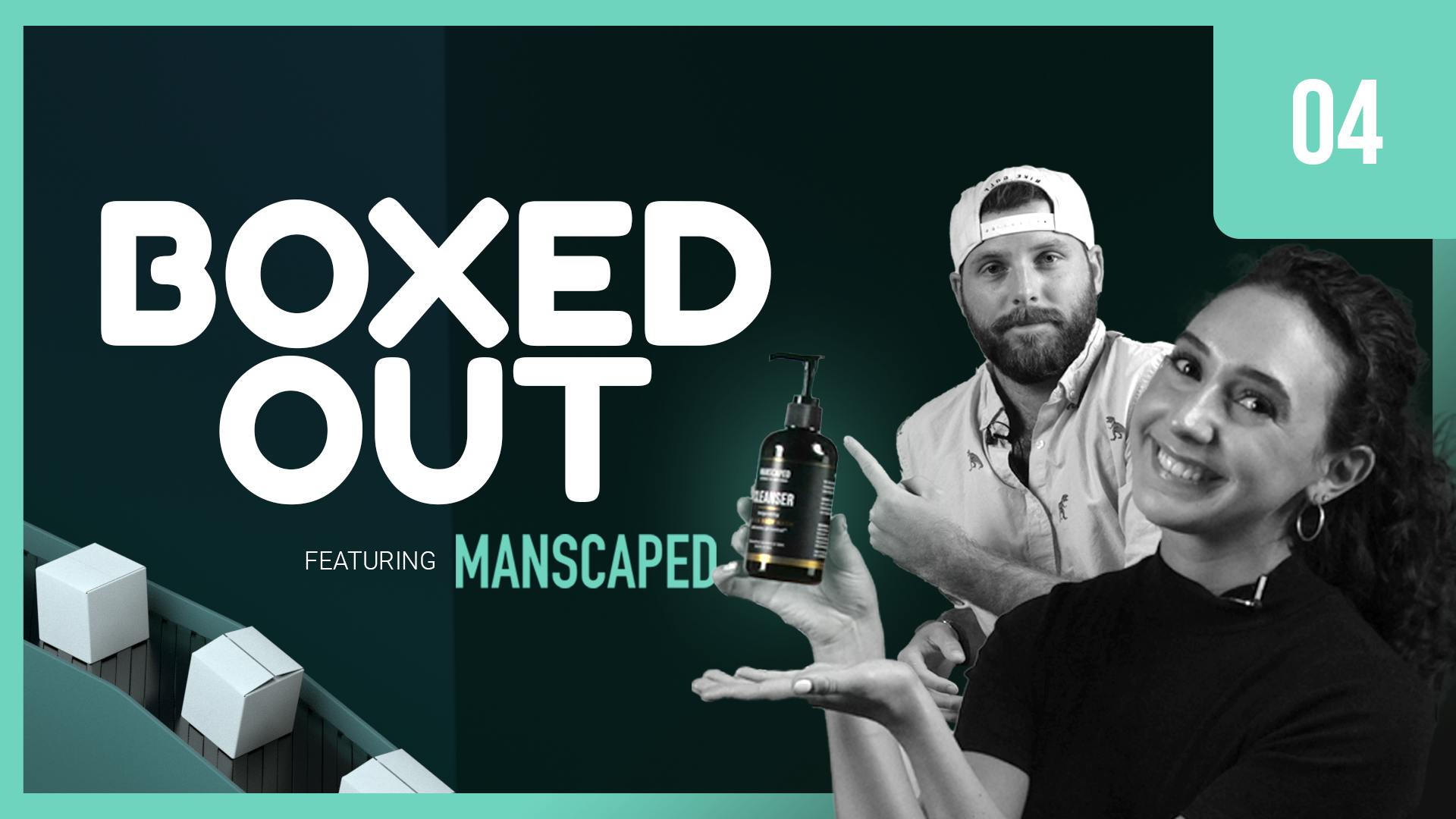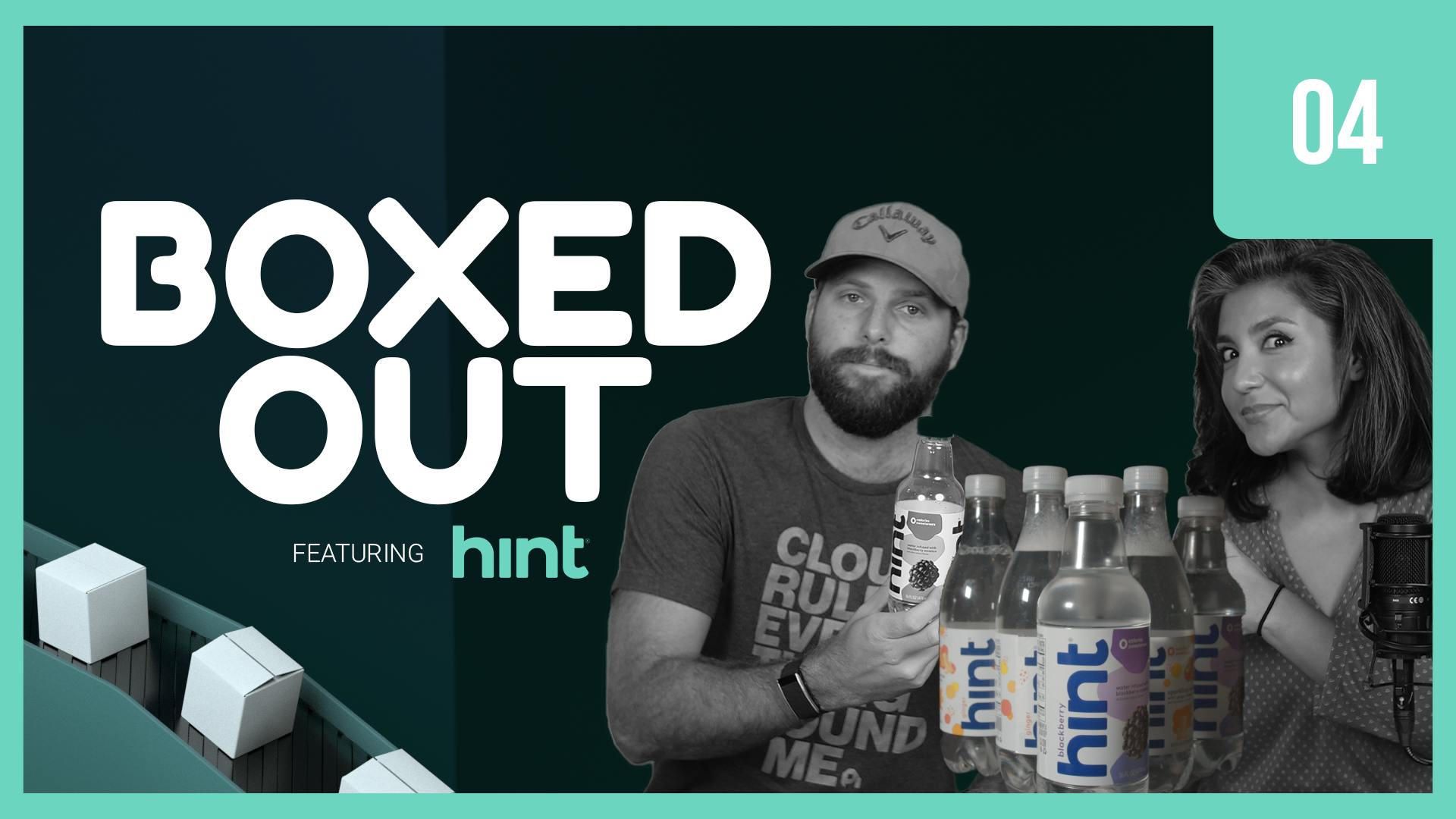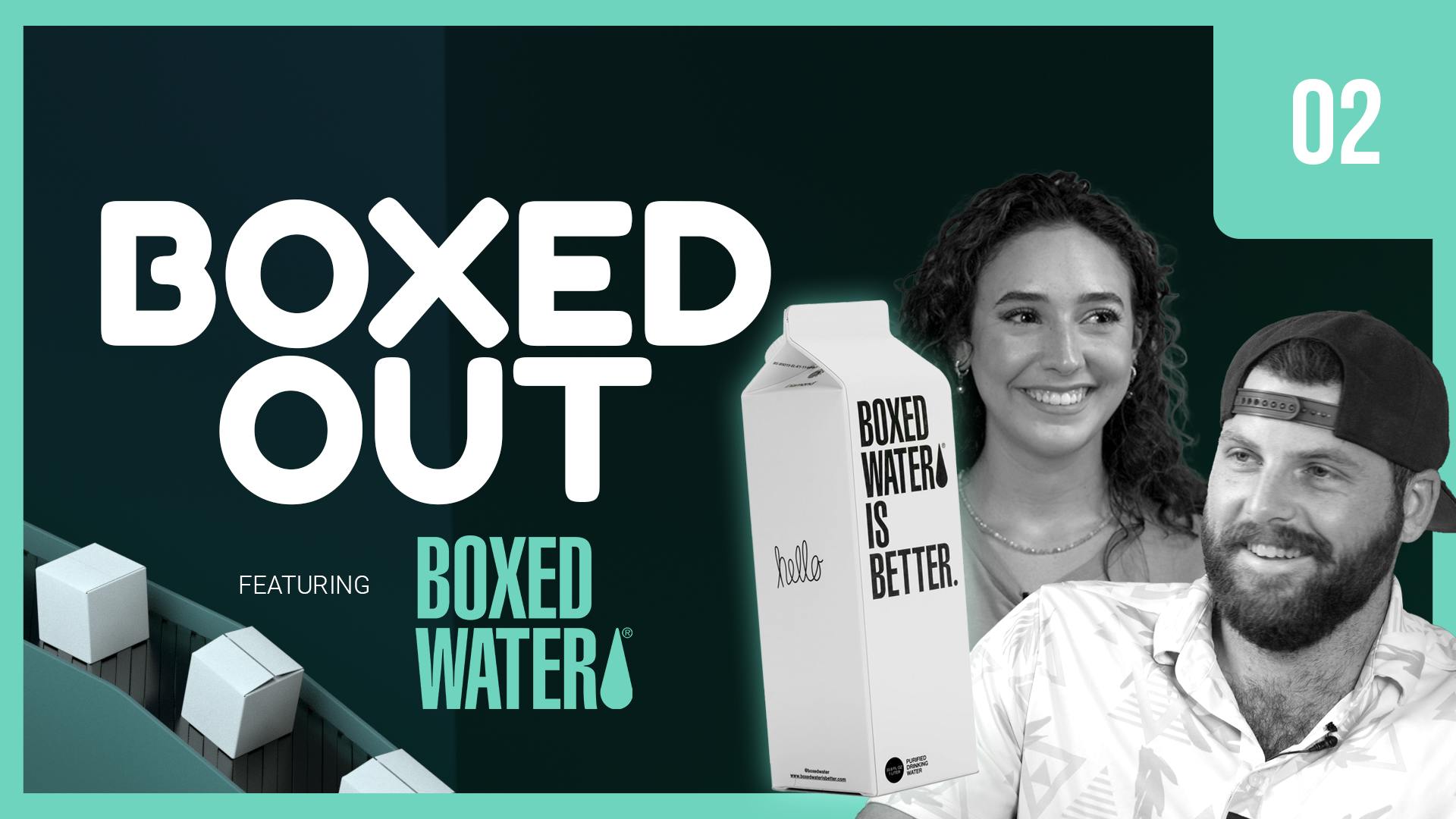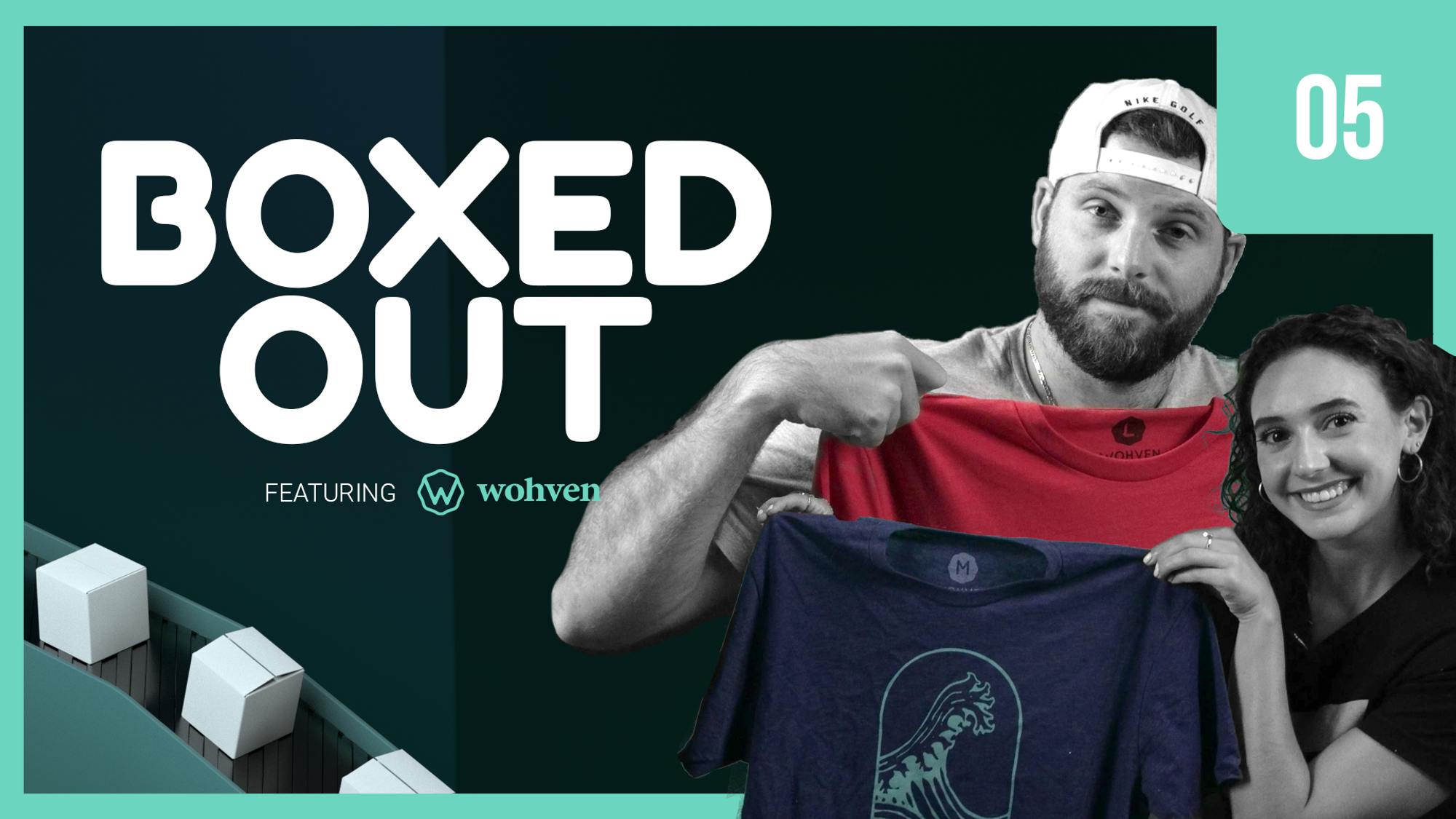
Can BarkBox's retention get any better?
This episode might reference ProfitWell and ProfitWell Recur, which following the acquisition by Paddle is now Paddle Studios. Some information may be out of date.
Please message us at studios@paddle.com if you have any questions or comments!
Today, we're talking about BarkBox, a company that's revolutionized the pet product market. We're going to learn how BarkBox is utilizing fantastic branding and product focus to stay ahead of the market, and then we're going to jump into what they're doing great—and not so great—with their subscription retention strategy, wrapping this all up into a nice case study for improvements for your own brand.
Since its launch in 2012, over two million dogs have received a BarkBox. With over 600,000 subscribers and a 95% retention rate, BarkBox is definitely a company we can all learn from. But its retention strategy is still missing some key components that can have a major impact long term. Find out what they are.
Key takeaways:
- Offer add-ons that are needed on a recurring basis
When in doubt, make sure you’re offering up add-ons and such that make sense for your customer, but if possible, put some extra thought into showcasing products that are going to be great for retention. If the product naturally is used on a recurring basis, you naturally will retain more customers.
- Adding a donation option increases retention
We continually find that customers with a subscription donation bundled with their purchased products have 10-20% higher retention. Even if it's nominal, people feel more invested in the subscription and want to make sure they're still helping the world. It's a great tactic for business and that's also great for the world. It’s something that every brand should think of, because it’s so easy to add and ultimately has great compounding on multiple fronts.
- Take your cancellation flow very serious
Every subscription ecommerce brand should make sure then when a customer goes to cancel, they get asked 1-2 questions on why they’re leaving, and based on that reasoning, they get prompted with different offers to stick around.
We spent a total of $95.7 billion on our pets in 2019, and it’s estimated that we’ll spend $99 billion in 2020, according to The American Pet Products Association. This study also tells us that about 67% of American households own a pet, which translates to 84.9 million homes overall. That is a lot of pets! So, it’s no surprise that the pet industry has been experiencing explosive growth.
Additionally, Millennials and Gen Xers are adopting more pets than previous generations, and as a result, online purchases for pet products and services have also significantly increased. This has helped the market surge, and pet businesses are taking advantage of these trends. One in particular is BarkBox—a monthly-themed subscription service that provides all-natural treats, clever toys, and experiences.
BarkBox was founded in December 2011 by Matt Meeker, Carly Strife, and Henrik Werdlin. The idea to start BarkBox came to Meeker after he had a rather difficult time finding retailers that sold pet products for his 150-pound Great Dane in NYC. Understanding the void first hand, Meeker decided to do something about it. All three founders were passionate about dogs and wanted to create and offer something unique that pet retail chains didn’t have. And within two months, they were launching the BarkBox site.
BarkBox's success
There are two factors for BarkBox’s phenomenal success: its focus on great content and its high retention rate.
BarkBox understood, from the get-go, the importance of customer engagement through content. And though content is hard to measure, content engagement can show you how much people are or aren’t enjoying your product. BarkBox says that they “create content to start the conversation with people and to have a conversation that’s not about products.”
Consumers want to talk to the companies they’re spending their money on. They want an emotional connection with their favorite brands. And BarkBox does this extremely well. It knows that by cultivating that connection through great content, it’s creating loyal customers. In turn, it has the opportunity to really understand its customer’s needs, so that it can then meet those needs and continue improving. All of this leads to its remarkably high retention rate, which will probably keep them in the game long term.
So, what’s all the barking about? Well, it depends on your dog. BarkBox offers customers three box sizes to choose from, customized according to their dog’s type and size: “Small and Cute” (0-20 pounds), “Just Right" (20-50 pounds), and "Big and Bold" (50+ pounds). Each box follows a unique theme and includes two innovative toys, two all-natural bags of treats, and a chew. You also have the option for a six-month or 12-month subscription, or a one-time purchase. And if your pup isn’t 100% satisfied, BarkBox promises to make it right to ensure your dog is happy.
Since its launch in 2012, over two million dogs have received a BarkBox. Those dogs and their parents seem to be happy, as BarkBox has over 600,000 subscribers with a 95% retention rate. It’s valuation is estimated to be between $150-$200 million. Today, BarkBox has expanded into many new product categories and thousands of retail locations and continues to grow. BarkBox believes that, generally, the more people are talking about your business, the better. And people are definitely still talking about BarkBox.
Retention Review
Not everything's amazing about BarkBox’s strategy—but there’s still a lot to learn from them. They do a great job at appealing to the niche part of the market and expanding that niche steadily. That being said, we need to remember: retention is key and an area where most brands mess up.
Why is retention important?
You spend half of your budget and time acquiring customers, but to be successful, you need to keep them. The beauty of the subscription model is that the relationship with the customer is baked directly into how you make money. If that customer is happy, they'll keep buying from you in the long term. If they're upset or not seeing the value, they'll cancel—quickly.
Plus, money talks here. Subscription ecommerce companies using the tactics we're going to talk about have 2x the customer lifetime value (LTV), 2x the average order value, and 3x higher growth rates, because they're not worried about plugging a leaky retention bucket.
To highlight the importance here, let's look through BarBox's retention strategy and break down what they're doing well, and not so well, so you can learn for your own DTC business.
Retention has three parts:
- Active churn, which are customers who are actively choosing to cancel your product.
- Expansion revenue, which are your existing customers that buy more product.
- Delinquent (or involuntary) churn, which are customers who's credit card or payment has failed, which sadly is one of the largest single buckets of where you're losing money.
Active Churn
When we look at BarkBox's active churn, there are so many reasons why a customer may cancel—some you can control, others you can't. We want to make sure BarkBox is not only setting up their customers for long-term retention in the initial purchasing process, but that they're also collecting information on why someone's cancelling, if they so happen to, in order to get a clean cycle of retention improvement.
BarkBox is a brand that gets almost everything right when it comes to retention, and if there’s one company for you to go deep on studying and emulating, it’s them. This kicks off right in its new customer onboarding process. BarkBox asks the right amount of questions to get enough information to tailor the product to you and your dog specifically, but also not so many that it becomes overwhelming.
When they ask your dog’s weight and name, there’s a very clear purpose. The name is so they can start to build a connection with you, and even if you end up not checking out, it can still market to you and your dog by name. This may not seem like a big deal, but we all know the dog owner that would do basically anything for their dog, so it’s a powerful move. The dog’s weight is actually information for BarkBox’s retention strategy because it wants to make sure it sends the right type of treats and toys for your pup. If you ended up getting a mismatch, you likely wouldn’t be happy and would churn out.
The big takeaway for your brand is to make sure you start laying the groundwork for a great relationship with your customer in the beginning. It pays off over time.
As we go through the checkout flow, BarkBox also has some of the best term optimization we’ve seen from a subscription ecommerce brand. Term optimization means optimizing to get your monthly customers onto longer-term plans. Customers on quarterly and annual plans tend to have 2-3x higher lifetime value according to a study we completed analyzing 50,000 subscription ecommerce customers.
By guaranteeing these customers stick around for a certain number of months, BarkBox is able to offer up a discount, but notice how the discount isn’t exceptionally steep. It even teases out certain designs and varieties to get you to optimize for a longer-term plan. It’s really smart because we find whole numbers and actual promotions work so much better than percentages here.
The big takeaway for your brand is that you want to make sure you’re working to get longer term commitments upfront, but also after the initial purchase. A lot of customers will need to experience the product before they’re ready to commit, and that means, you just have to ask.
Last up, BarkBox’s cancellation flow is basically what I want every single subscription ecommerce brand to have because it’s exceptionally well thought out and guaranteed to lower the cancellation rate. For context, you shouldn’t hold your subscription customers hostage, but you should absolutely not just let them walk out the door. Instead, ask a 1-2 question survey to figure out why they’re leaving and then use that information to offer up options to save them—salvage offers, pause plans, maintenance plans, etc.
We’ve found that those brands with offboarding and salvage offers tend to save 15-30% more customers who go through a cancellation flow. This is based on a study we completed studying just over 1,000 DTC subscription companies. The big takeaway for your brand is to make sure you’re taking that cancellation flow seriously. BarkBox is a great case study to emulate, and software like ProfitWell Retain lets you do this with minimal work on your end.
Expansion Revenue
Expansion revenue is crucial, because your existing customers are more than willing to buy 3x more from you—you just have to make sure to ask. Plus, those customers who have at least one add-on or additional purchase tend to have 18-54% higher lifetime value, meaning they're paying you more over the life of the subscription, but they're also sticking around longer, because they're more ingrained within your product.
BarkBox is doing great here as well. They really thought through the natural products that are episodically in the life of a dog owner. They have the toy boxes, but then expanded to food, treats, and teeth health. If you think through these options, all of them have recurring use cases on a daily basis. Previously, BarkBox had highlighted other products it was experimenting with including vet care and other products that didn’t have this episodic use case, but now it’s only showing us things that would very clearly retain at a higher rate, assuming I liked the product to begin with.
When in doubt, make sure you’re offering up add-ons and such that make sense for your customer, but if possible, put some extra thought into showcasing products that are going to be great for retention. If the product naturally is used on a recurring basis, you naturally will retain more customers.
On a tactical level, BarkBox is also very good at making sure you have clear upgrade paths within the core product BarkBox line. Notice how in the order flow they offer up an additional premium toy, but it’s not a one-off purchase. This is another mistake I see a lot of brands make where their upgrades aren’t a subscription. Assuming the product is good, it’s absolutely ok to add recurring add-ons to expand that lifetime value considerably.
Within the order flow, I’m already making the bigger decision to buy the box. Now, I’m just making a small decision to add the add-on. It’s a very common pricing phenomenon where you get sold the big thing first because then all the smaller decisions are easy to make. For the company doing the selling, though, you see those smaller decisions add-up. Super smart.
BarkBox is also smart about its post-purchase upgrade paths, utilizing really segmented messaging and even design variations to get you to opt into more. The big takeaway for your brand is to make things effortless like BarkBox. There’s a lot of complexity here if you think about it, but they’ve made it incredibly easy from the customer perspective.
Credit Card Failures
Now let's talk about the sexiest topic in the world—credit card failures. We know you don't wake up sweating in the middle of the night thinking about credit cards—that's our job—but here's why we obsess over things like this: just under 40% of the customers that leave you are leaving you because of failed payments. To get these folks back, we want to make sure Grove Collaborative is treating these folks like a marketing channel, sending them messages before the point of failures, all the way to after the point of failure through email and text messages.
Unfortunately, this is where we have to stop gushing so much about BarkBox because credit card failures are an area where they scored pretty low, which means they’re losing revenue. Let’s start with the emails they send after a credit card failure. I hate these pseudo plain-text emails. They’re also not that effective. When you use these types of emails, you don’t get the advantage of an HTML designed email or the advantage of a plain-text email. The sad part is they already put in the work on the copy, so they may as well put in the extra effort to make this full plain text.
The reason true plain text is important is that they get 50% higher click-through rates when they look and feel like they came from an actual human. We ignore “market-ey” looking emails and especially ignore emails like BarkBox’s. Their copy is great though, so they just need to do some legwork with a four to five email drip that’s intelligently sent based on user behavior.
Another big optimization point is that BarkBox makes you log in to update your payment information. This is brutal because most subscription ecommerce customers don’t remember their password, and over 50% of users are opening emails like this on mobile. The result is basically a lot of ignored messages.
Eliminating this friction alone can increase recovery rates substantially. BarkBox isn’t a small brand, so fixing something like this and making it so customers don’t have to log in to update their credit card is a no-brainer in terms of the revenue gains.
The last little bit here is that BarkBox seems to scream SMS to me. It’s a huge brand that’s so personable and good at all the little things. It'd be nice for it to incorporate SMS into its failed payment flows. SMS open rates are 90% within the first three minutes, and while you have to be careful not to go overboard, they’re a powerful force when it comes to payment failure recovery.
Make sure you’re communicating with your customer in the ways they want to be communicated with. It’ll result in much bigger gains.
Overall:
Overall,BarkBox is performing above average compared to what we see from other subscription ecommerce brands. There are a lot of highlights there, but still some room for improvement. If they want to take on this multibillion-dollar industry and win though, there are some key changes that need to be made.
Retention Revamp
Let's revamp. First though, why do we feel we have any authority to even talk about this? Roughly 20% of the entire subscription market is using ProfitWell, so we're sitting on more data than anyone else. Simply put, we have the data to know what works and what doesn't, and we care more about this problem than anyone else out there.
Let's walk through what we'd steal and some of the things we'd change immediately about BarkBox's retention strategy, so we can all learn for our own brands.
Steal it:
BarBox's offboarding and cancellation flow
There’s a lot to love here. In terms of the highest impact piece BarkBox is doing that all brands should be doing, I think it has to be the offboarding and cancellation flow. Every subscription ecommerce brand should make sure then when a customer goes to cancel, they get asked 1-2 questions on why they’re leaving, and based on that reasoning, they get prompted with different offers to stick around.
You don’t want to hold your customers hostage, but you definitely don’t want them to just waltz right out the door, so this little bit of friction helps a ton. From a data perspective, companies with offboarding and salvage offers tend to have 15-30% lower cancellation rates than those who don’t. It’s huge.
And not a ton of work. Products like ProfitWell Retain do this for you.
Changes:
Add a donation option
In terms of something to fix, I think BarkBox is in the perfect position to offer up a subscription donation that increases its retention. It’s at the center of the dog market, so why not attach itself to a similar cause?
This isn’t just good for helping the world. It’s great for business. We continually find that customers with a subscription donation bundled with their purchased products have 10-20% higher retention. This is based on a study we completed on just over 30,000 DTC subscription customers. Even if it's nominal, people feel more invested in the subscription and want to make sure they're still helping the world. It's a great tactic that's also great for the world. It’s something that every brand should think of, because it’s so easy to add and ultimately has great compounding on multiple fronts. Plus, people love to help pups in need.
Upscale credit card failure process
BarkBox needs to upscale its credit card failure process. It isn’t a small brand anymore and should stop acting like one with its current process, because it’s losing a lot of money by doing the bare minimum.
They need four to five plain-text emails that go out in an intelligent drip based on the customer's behavior after they realize the card has declined. Those obviously don't send when a credit card gets back on file. SMS messages need to be in this flow, and it needs to liven up its credit card form a bit more to properly capture the user back in a more secure and pleasing way. Throw in some better payment retries as well, and you have a recipe for increasing payment recovery by 50%, which is a lot of revenue for them.
Who's up next?
Next week, we are going on a break! This was our final episode of Season 3, so I hope you guys enjoyed and learned from all of our findings so you can use them for your own DTC brands. We’re excited to be back with more Boxed Out when Season 4 drops in a few weeks.





